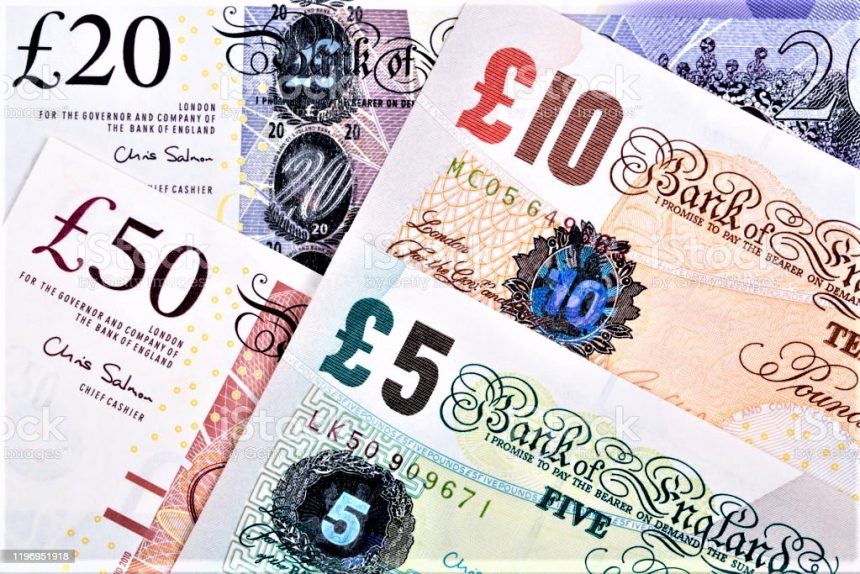Pound Retreats from Three-Year Highs amid Dollar Revival and BoE Uncertainty
The British Pound Sterling (GBP) extended its downward correction against the US Dollar (USD) on Wednesday, slipping near 1.3460 in the North American session after having surged to a three-year high around 1.3600 earlier in the week. This move comes as traders reassess expectations surrounding future Bank of England (BoE) policy moves, while renewed optimism over a potential US-European Union (EU) trade deal fuels fresh strength in the US Dollar.
Greenback Gains Ground as US-EU Trade Optimism Soars
The US Dollar staged an impressive comeback this week, clawing back most of the losses seen after last Friday’s tariff threat from US President Donald Trump. The USD’s rally is being driven primarily by optimism surrounding rapid progress in US-EU trade talks. On Tuesday, reports emerged that top US trade officials, including Howard Lutnick and Jameison Greer, have begun holding meetings every other day with their EU counterparts. This high-frequency dialogue suggests both parties are eager to reach a mutually beneficial deal before tensions escalate again.
Adding fuel to the Dollar rally was President Trump’s post on Truth.Social, where he applauded the EU’s swift response to his tariff ultimatum. “I was extremely satisfied with the 50% Tariff allotment on the European Union… the EU has called to quickly establish meeting dates,” Trump said, implying that the EU is motivated to strike a deal.
This rapid shift in sentiment lifted the US Dollar Index (DXY) to nearly 99.80, underscoring the Greenback’s broad-based strength across major currency pairs.
UK Economic Data Beats Expectations, But Sterling Fails to Capitalize
While the Pound is under pressure, recent UK macroeconomic data has largely surprised to the upside—adding a layer of complexity to GBP/USD’s short-term outlook.
Inflation Accelerates:
April’s UK service sector inflation surged to 5.4% year-on-year from 4.7% in March. This component is closely watched by the BoE due to its strong correlation with wage pressures and sticky inflation.
Retail Sales Rebound:
Retail Sales jumped 1.2% on a month-on-month basis in April, a sharp improvement from March’s modest 0.1% gain, pointing to robust consumer demand.
Economic Growth Surges:
UK Gross Domestic Product (GDP) in Q1 grew by 0.7%, outpacing the previous quarter’s 0.1% rise and surpassing analysts’ forecasts. The strong showing prompted the International Monetary Fund (IMF) to revise its full-year GDP growth outlook for the UK to 1.2%, up from its previous estimate of 1.1%.
Despite these upbeat economic signals, the Pound failed to maintain its bullish momentum, largely due to global risk factors and shifting US Dollar dynamics.
BoE’s Dovish Tilt Under Scrutiny amid Resilient Data
Earlier this month, the Bank of England cut interest rates by 25 basis points to 4.25% in a 7-2 vote, signaling the start of a cautious easing cycle. However, the recent strong economic data has led investors to reconsider the likelihood of another rate cut at the BoE’s June policy meeting.
BoE officials had initially guided that any future cuts would be “gradual and cautious,” but markets are increasingly skeptical that further easing is necessary, especially if inflation continues to prove sticky.
As of now, swaps markets are pricing in less than a 10% probability of a rate cut in June, a stark contrast to earlier in May when expectations were closer to 50%.
This reassessment of BoE policy has created a mixed narrative for the Pound: while stronger data should support the currency, the lack of commitment to further easing from policymakers leaves the GBP vulnerable to global risk sentiment and USD strength.
US Consumer Confidence Lifts as Trade Tensions Ease
Another factor reinforcing Dollar strength is the unexpectedly strong US Consumer Confidence data for May. After five straight months of deterioration, the Conference Board’s index rebounded sharply to 98.0, far exceeding forecasts.
The report cited an improvement in household sentiment driven by positive headlines surrounding US-China trade relations. The thaw in tensions between the world’s two largest economies is viewed as a constructive development that could reduce inflationary pressures and boost global trade—factors that typically favor the US Dollar in times of uncertainty.
Fed Seen on Hold Ahead of PCE Data, Trump Economic Agenda
Investors are now closely watching Friday’s release of the Personal Consumption Expenditures (PCE) Price Index, the Federal Reserve’s preferred inflation gauge. While April’s data is unlikely to shift the Fed’s near-term stance, it will offer important clues about underlying inflationary trends.
Fed policymakers are widely expected to remain on hold until there’s greater clarity regarding the new economic direction under President Trump’s second term, particularly in terms of fiscal policy, tariffs, and deregulation.
Given the political noise and uncertainty surrounding future fiscal initiatives, the Fed is in wait-and-see mode. This passive stance leaves the Greenback sensitive to broader risk sentiment and geopolitical headlines.
Technical Outlook: Pound Faces Immediate Resistance Near 1.3500
From a technical perspective, the Pound pair has entered a short-term corrective phase following its surge toward multi-year highs. The 1.3600 level, which marked a key resistance zone, triggered heavy selling as profit-taking and a stronger Dollar weighed on the Pound.
Key technical levels to watch include:
- Immediate Resistance: 1.3500 psychological mark.
- Support Zone: 1.3420-1.3440 (last week’s breakout zone).
- 200-day EMA: Currently near 1.3360, acting as a critical dynamic support.
A sustained break below the 1.3440 zone could expose the pair to deeper downside risks, especially if the US Dollar continues to strengthen or if Friday’s PCE data surprises to the upside.
What’s Next for the Pound? All Eyes on BoE Speeches and Global Trade News
With the BoE’s June decision still in flux, speeches by key policymakers will likely guide market expectations over the next few weeks. Any signs of concern over lingering inflation could drive GBP higher, while dovish rhetoric may open the door to further downside.
At the same time, the GBP/USD pair will remain heavily influenced by developments in US-EU trade talks. A formal agreement between Washington and Brussels could further boost the Greenback, while a breakdown in talks may once again weigh on the USD.
The interplay of domestic UK fundamentals and global macro trends will define the trajectory for pound in the coming weeks.
https://voiceoftraders.com/analysis/eurusd-reclaims-1-1330-as-dollar-eases-ahead-of-fomc-minutes
[faq-schema id=”39700″]









